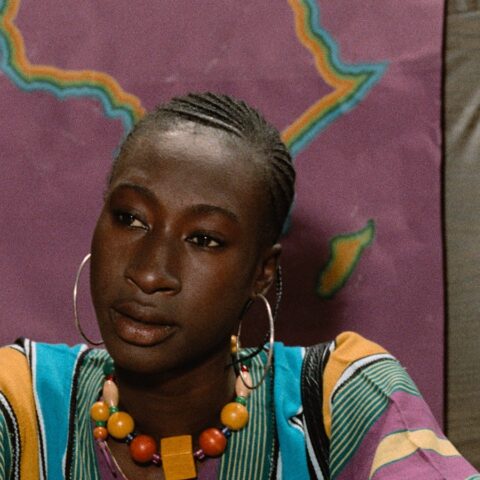Book Review: The Moral Complexities of
Eating Nyama Choma
�
By Ronald Elly Wanda
�
Tuesday, May 3, 2016.
�
Sometimes, a day in the garden can have a
double-barreled climax. I have just had one of the best. Recently while on a
visit to my in-law’s new residence in the beautiful Maasai Peninsula of
Kitengela, as the light faded into the evening I found myself looking at their
vernacular-art-like garden of Sukuma Wiki (collard greens – part of the
Brassica Oleracea family of vegetables) and feeling obliged to admit that
although it lacked an exceptional style, it was nevertheless an organic bliss. Sukuma
Wiki has been a favorite veggie in East Africa for more than 2000 years.
Nothing, indeed, beats eating fresh vegetables straight from the garden. Hours
later, through a captivating new book ‘The Moral Complexities of Eating Meat’
(2016) by Ben Bramble and Bob Fischer (editors), I was transported to the nyama
choma planet, a hidden world of equal wonder.�
Bramble and Fischer’s
new book reaffirms that the ethics of eating meat is
still a hot matter. Indeed, many things food-philosophical still are. The book
contains twelve essays with a short introduction from the editors. Some of the
essays are orthodox. Some of them are heterodox. Even the most orthodox,
familiar pieces are full of striking insights and ideas for new directions. It
contains sharp, riveting asides about anti-natalism, bug-eating, comparative
accounts of harm, duties to pets and prey animals, and so on.
The book’s idea is said
to have arisen from a “write-your-best-defense-of-meat-eating”
competition in the New York Times, where
the book’s editors Ben Bramble and Bob
Fischer participated and were finalists. It is divided into three parts:
Defending Meat, Challenging Meat, and Future Directions. Defending Meat is the
shortest. In it, Christopher Belshaw defends the permissibility of killing
animals for food by defending the view that death is not bad for them. He
argues that, for most adult farm animals, even those living on a free-range
farm, life is a grinding, mindful monotony, interrupted by occasional pains.
(Young animals, he thinks, have happier, richer lives.) Killing such animals
isn’t wrong. And then neither is eating them.
This book, although not specifically written with
the African carnivorous audience in mind, offers an appetizing sociological
account of food politics, contemporary patterns of cultural identity, and the
effect of meat-eating as an informal hypothesis of unity that can be useful in
a country such as Kenya, whose metaphoric ‘man eat man’ greasy politics are
well documented. �
Everything from crocodile to ostrich meat is considered
fair game in Kenya, nyama choma, Swahili for “grilled meat” is tasty
barbecue meat stripped down to its raw elements. That said, it is the Kenyan
purist creature that really makes a meal of it all. He is generally known to
stick to mbuzi choma (goat) both for its gutsy flavour and slight
chewiness. He would often ensure that there are no
sticky-sweet glazes in his favorite meal, just plenty of smoke, fire and, of
course, hulking portions of bone-in meat. Nyama
choma remains undoubtedly Kenya’s most celebrated dish loved in equal
measures by the rural masses and elites of the metropolitan circles.
Straddling the equator,
Kenya remains a geographic and cultural marvel. Its nyama choma sector involves a complex
and dynamic supply chain with a considerable number of small, medium and large
business activities centred on meat production. Historically, nyama choma activities originated from
the customs and traditions of the pastoral people such as Kitengela’s Maasai
community. Nyama choma as a business began
at the livestock market places, taking advantage of the readily available
market – since market days would occur only once or twice a month, people would
often attend in large numbers. Indeed, this was the only easy way of providing
food to the buyers and sellers at remote livestock markets. Because of the
popularity of the product, the business of nyama
choma soon expanded beyond the livestock market. Today these activities are
found in almost all urban and trading centres in Kenya.
Kenya’s nyama
world aside, Bramble and Fischer’s book raises important arguments
about food production. Although, admittedly, there is comparatively little in
the book about eating as opposed to buying or producing food. Indeed, with the
exception of Belshaw’s and Callicott’s papers all of the other papers in the
book are critical of contemporary meat production. That said, interesting
questions have been raised, for instance, how do we generate conclusions about
consumption based on the raising and killing of animals? Donald Bruckner’s
questions goes further: If certain arguments generate the conclusion that it is
wrong to eat farmed animals, do they also generate the conclusion that it is
wrong to eat animals’ period? Do such arguments get quite a bit further than a
requirement not to eat certain sorts of animals? Do they get as far as a
requirement not to eat certain sorts of vegetables, namely, those produced
using methods that kill animals or destroy animal habitat or are produced in
ways that are environmentally destructive, he wonders.
Needless to say, Challenging Meat is the book’s
longest section, though not entirely because the challenges to meat are
lengthy. Some of the most interesting work has quite frankly nothing to do with
that challenge. For example, the argument that “it is wrong to raise certain
animals for food”. Hence, “it is wrong to buy or eat such animals” is clearly
invalid. Ben Bramble leads the canonical crusade against meat, especially arguing
that ‘it costs animals so much and gains us so little’. He works through four
objections to it, developing each and then arguing against it, including a bit
where he takes the standard “But giving up meat would be such a great cost
to me!” objection to it and turns it on its head, arguing that eating meat
costs us a great deal psychologically.
Appreciably, Tristram McPherson invites a familiar
omnivorous response to Bramble’s arguments and the like by pointing out that it’s
perfectly acceptable to eat meat. In the last section of the book, titled
‘Future Directions’, Alexandra Plakias argues that debates between vegetarians
and omnivores of the sort discussed in the book might fruitfully be thought of
as debates about what counts as food rather than debates about which foods we
may eat. She argues, too, that these debates might be fruitful even if they do
nothing to change any minds about the permissibility of meat-eating.
Likewise,
Bob Fischer argues that blaming people for eating meat might
be counterproductive and also arbitrary and unmotivated. And it’s arbitrary to
single out meat-eating out as a thing to blame. So much needed moral music to the
nyama choma choir… Did I hear someone
sing, burn baby burn!
�
Ronald Elly Wanda is the Executive Director of Grundtvig
Africa House, Nairobi, Kenya.�
�
Book details
The Moral Complexities of Eating Meat, (2016) Ben Bramble and Bob
Fischer (eds.), Oxford University Press, 217pp. $29.95 (hbk), ISBN
9780199353903.
�
�
�
Book Review: The Moral Complexities of Eating Nyama Choma
No Comments currently posted | Add Comment
Comment on this Article
Your Name
Please provide your name
Your Comment
//set data for hoidden fields
//transfer();
var viewMode = 1 ;
//============================================================================
//HTML Editor Scripts follow
//============================================================================
function exCom(target,CommandID,status,value)
{
document.getElementById(target).focus();
document.execCommand(CommandID,status,value);
}
function transfer()
{
var HTMLcnt = document.getElementById(“ctl00_MainContent_txtComment_msgDiv1”).innerHTML;
var cnt = document.getElementById(“ctl00_MainContent_txtComment_msgDiv1”).innerText;
var HTMLtarget = document.getElementById(“ctl00_MainContent_txtComment_HTMLtxtMsg”)
var target = document.getElementById(“ctl00_MainContent_txtComment_txtMsg”)
HTMLtarget.value = HTMLcnt;
target.value = cnt;
}
function hidePDIECLayers(f,p)
{
//e.style.display = ‘none’
f.style.display = ‘none’
p.style.display = ‘none’
}
function toggle(e)
{
if (e.style.display == “none”)
{
e.style.display = “”;
}
else
{
e.style.display = “none”;
}
}
function ToggleView()
{
var msgDiv = document.getElementById(“ctl00_MainContent_txtComment_msgDiv1″);
if(viewMode == 1)
{
iHTML = msgDiv.innerHTML;
msgDiv.innerText = iHTML;
//alert(viewMode);
// Hide all controls
Buttons.style.display = ‘none’;
//selFont.style.display = ‘none’;
//selSize.style.display = ‘none’;
msgDiv.focus();
viewMode = 2; // Code
}
else
{
iText = msgDiv.innerText;
msgDiv.innerHTML = iText;
// Show all controls
Buttons.style.display = ‘inline’;
//selFont.style.display = ‘inline’;
//selSize.style.display = ‘inline’;
msgDiv.focus();
viewMode = 1; // WYSIWYG
}
}
function selOn(ctrl)
{
ctrl.style.borderColor = ‘#000000’;
ctrl.style.backgroundColor = ‘#ffffcc’;
ctrl.style.cursor = ‘hand’;
}
function selOff(ctrl)
{
ctrl.style.borderColor = ‘#9BC1DF’;
ctrl.style.backgroundColor = ”;
}
function selDown(ctrl)
{
ctrl.style.backgroundColor = ‘#8492B5’;
}
function selUp(ctrl)
{
ctrl.style.backgroundColor = ‘#B5BED6’;
}
�
Size 1
Size 2
Size 3
Size 4
Size 5
Size 6
Size 7
//give focus to the msgdiv… always otherwise save button will not save content.
var mDiv = document.getElementById(“ctl00_MainContent_txtComment_msgDiv1”);
try
{ mDiv.focus();}
catch(e)
{
//alert(‘Invisible’)
}
//if ( <> ‘none’)
//
Send to a friend | �
View/Hide Comments (0) | �





Very interesting details you have mentioned, appreciate it for putting up.Leadership
Вся информация, представленная на данном сайте, носит исключительно информационный характер и предназначена для ознакомления с деятельностью онлайн-казино. Сайт не являемся оператором игр и не предоставляем услуг по организации азартных игр. gnimnrntry … https://t.me/s/kazino_casino_top
Hello there! Do you know if they make any plugins to help with SEO?
I’m trying to get my website to rank for some targeted keywords but I’m
not seeing very good results. If you know of any please
share. Many thanks! I saw similar article here: Eco product
Very interesting subject, thanks for posting. “Genius is of no country.” by Charles Churchill.
A person necessarily assist to make seriously articles I might state. That is the first time I frequented your website page and up to now? I amazed with the analysis you made to create this actual put up extraordinary. Fantastic job!
This website is my breathing in, really fantastic design and style and perfect subject material.
This web site is really a walk-through for all of the info you wanted about this and didn’t know who to ask. Glimpse here, and you’ll definitely discover it.